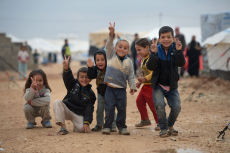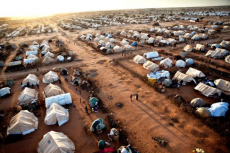
This is a series of two articles where you can read about what it means to be a refugee. In this second article you can read about what happens after one has become a refugee. You can also learn a little about how most refugees live. In the first article, you could read about how people become refugees and which international organizations are there to help them.
In most places there is a belief that refugees have a negative impact on the economy and the societies they move into, because they need services such as hospitals and schools, which the government needs money to run. But refugees are actually often very beneficial to the communities they live in; they are eager to get jobs, will work hard and will give taxes to the state. When large groups of people move into new places it also benefits the whole community because communities can sell more food, drinks and clothes as there are more people who need these things. The services that refugees (like all people) need are payed back in the taxes that refugees pay to their new country.
Nevertheless, refugees are often viewed as a strain on their new communities. Many therefore live in refugee camps or settlements, which have been set up by organizations such as the United Nations High Commissioner for Refugees (which you can read about in the first article). The difference between a settlement and a camp, is that a camp is usually meant to have people staying there for a shorter amount of time, whereas a settlement is a place where refugees stay for a longer amount of time. Sometimes camps become settlements. Settlements and camps are both usually set up in remote areas so as not to affect existing cities too much. It is also very hard for refugees to enter new countries, especially if they are trying to enter as a whole family or if they lost their passports when they were fleeing. For example, as of March 2015, there were approximately four million refugees from Syria, but less than a hundred have been given shelter in the United Kingdom, and no families have been let in whole.

Although settlements and camps are meant to be places where refugees can live temporarily, many become permanent or long term. The UN thinks that the average amount of time spent in a refugee camps is currently 17 years. That means large amount of children grow up in places that have limited facilities, such as shops, houses and toilets. Some settlements are as old as 1950 – that means they are over 60 years old!
Luckily there is a large amount of people who are spending every day making sure that refugees are as happy as possible. The UNHCR has almost 10.000 people working for them, and this is just one of many organisations that try to help refugees. So although many countries in Europe are trying to make sure that their countries aren’t filled with refugees, many are working to make sure that refugees are allowed to work and live happy lives.
Image 1: http://peacechild.org/syrias-refugee-children/
Image 2: http://www.worldbulletin.net/haber/157856/un-asks-kenya-to-rethink-closure-of-somali-refugee-camp

0 Comment:
Be the first one to comment on this article.